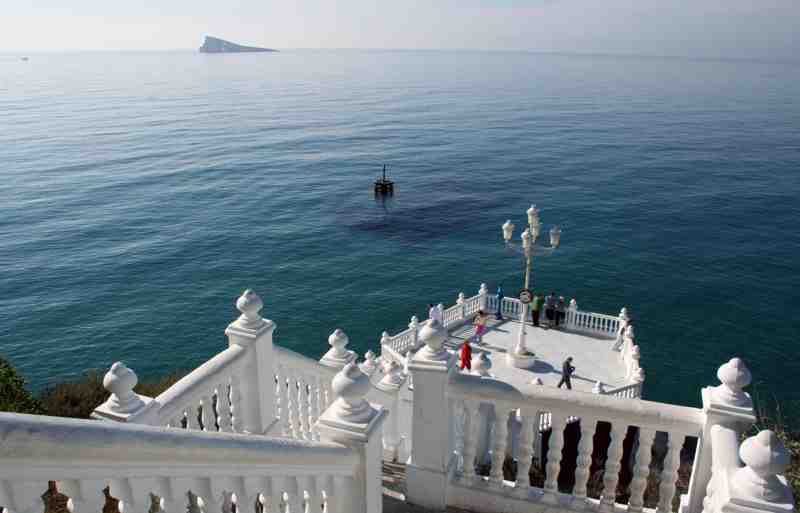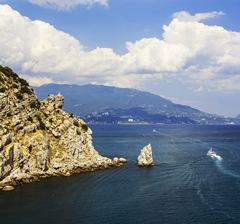
The Costa Blanca, with its stunning Mediterranean views and charming coastal towns, holds more than just natural beauty—it also boasts a collection of historical gems that have stood watch over the coastline for centuries. Among the most striking of these are the watch towers, often perched high on hills or rocky outcrops, keeping vigil over the sea. These towers, built during different periods of Spanish history, tell a story of coastal defense, maritime trade, and the ever-changing landscape of Spain’s coastal heritage.
A History Carved in Stone
The Costa Blanca, which stretches for around 200 kilometers along the eastern coast of Spain in the province of Alicante, was historically vulnerable to pirate attacks, raids, and incursions from hostile forces. The most significant period of construction for the watch towers occurred between the 16th and 18th centuries, though some structures date back to earlier periods.
The towers were part of an extensive network of fortifications designed to defend the Spanish coast from Barbary pirates, Ottoman invaders, and other maritime threats. By the late 16th century, as piracy increased in the Mediterranean, Spain’s coastal defenses needed an overhaul. This led to the construction of more than 70 watch towers along the Costa Blanca’s shoreline.
The towers served multiple purposes: they were lookout points for spotting enemy ships, they communicated with one another through signals such as smoke and fire, and they acted as forts for soldiers when a full-scale defense was necessary. The coastal route was dotted with these towers, strategically placed to ensure the maximum coverage and early warning time for coastal villages and towns.
Notable Watch Towers Along the Costa Blanca
Several of these historical structures have survived the passage of time and are still visible today, each with its own unique story to tell.
Torre de la Illeta (Villajoyosa)
One of the most famous and best-preserved watch towers along the Costa Blanca is the Torre de la Illeta, located near Villajoyosa. This 16th-century tower is an iconic symbol of coastal defense. Built on a rocky outcrop, the tower offers panoramic views of the Mediterranean, which would have been crucial for spotting pirate ships approaching the coast. The tower, which is now a cultural landmark, offers visitors a glimpse into the strategic importance of the region during times of conflict.
Torre del Cap de la Nau (Jávea)
The Torre del Cap de la Nau is another prime example of Costa Blanca’s defense structures. Perched on the Cap de la Nau headland in Jávea, this tower stands on one of the most picturesque spots along the coastline. The view from the tower is breathtaking, offering sweeping vistas of the coastline and the surrounding Mediterranean waters. Dating back to the 17th century, the Torre del Cap de la Nau was used not only for surveillance but also for defending against pirates and invaders from the sea.
Torre de l’Olla (Altea)
Located near Altea, this watch tower offers a striking view of the surrounding coastline. The Torre de l’Olla was built in the 16th century, and like many others, it was designed to monitor maritime traffic, allowing for early detection of enemy ships. Today, the tower is an important part of the region’s heritage, and visitors can walk to the top for a chance to enjoy a fantastic view of the nearby coastline and the town of Altea.
Torre de les Creus (Benissa)
Sitting on a hill in Benissa, the Torre de les Creus dates back to the 17th century. This tower is one of the more secluded of the watch towers in Costa Blanca but offers an excellent example of coastal defense architecture. The tower’s strategic position provided an ideal vantage point for its keepers, allowing them to spot approaching vessels from miles away. The tower is also part of the local history and a reminder of the region’s past.
Torre de les Caletes (Benidorm)
Overlooking the rugged cliffs of the Sierra Helada Natural Park, the Torre de les Caletes—also known as the Torre de la Punta del Cavall—is one of Benidorm’s most significant historical monuments. Built in the 16th century, this coastal watch tower was part of the same defensive network that guarded the Costa Blanca from pirate raids. Its elevated position on the headland between Benidorm and Albir provided a commanding view of the Mediterranean, allowing early detection of enemy ships. Though now a ruin, the tower remains a popular hiking destination and offers some of the most dramatic sea views along the Benidorm coast.
Torre de Morales (Benidorm)
Located inland, the Torre de Morales dates back to the 16th century and once served as an early-warning post during times of pirate incursions. Unlike the coastal towers, it communicated with other inland posts and local settlements through visual signals such as smoke and fire. The tower has undergone recent restoration efforts, helping preserve one of Benidorm’s lesser-known yet historically vital defensive structures.
El Canfali (Benidorm Castle Viewpoint)
Perched on the rocky outcrop between Benidorm’s Levante and Poniente beaches, the Canfali viewpoint marks the site of Benidorm’s former castle and lookout tower. Although only fragments of the original fortress remain, the location still commands one of the most iconic panoramas in the region. Once part of the town’s defense network, it is now a beloved viewpoint known as the Balcón del Mediterráneo, connecting modern tourism with the memory of Benidorm’s watchful past.
The Role of the Towers Today
While the immediate threat of piracy has long passed, the watch towers along the Costa Blanca remain important cultural and historical landmarks. Many of them are now protected as part of Spain’s national heritage. Today, these towers are popular with tourists, history enthusiasts, and photographers who come to enjoy both their beauty and the panoramic views they offer.
Several of the towers have been restored and are open to the public, offering insight into the region’s past and the critical role these structures played in shaping the coastline’s defense systems. Others, while less accessible, remain in their original form, quietly standing as sentinels over the sea.
As the Costa Blanca continues to thrive as a tourist destination, the watch towers offer a tangible connection to the past, bridging the centuries between their construction and the modern-day visitors who come to admire them. They are a testament to the resilience and foresight of those who built them, serving as silent sentinels along one of the most beautiful coastlines in the world.
Conclusion: -The watch towers of Costa Blanca are much more than mere relics of the past; they are symbols of a rich history of defense and survival. Their strategic locations and historical significance tell the story of a coastline that, while peaceful today, was once fraught with danger. Whether standing tall over the Mediterranean or nestled among the hills, these towers continue to watch over the landscape, guarding memories of a time when the sea held both promise and peril.














